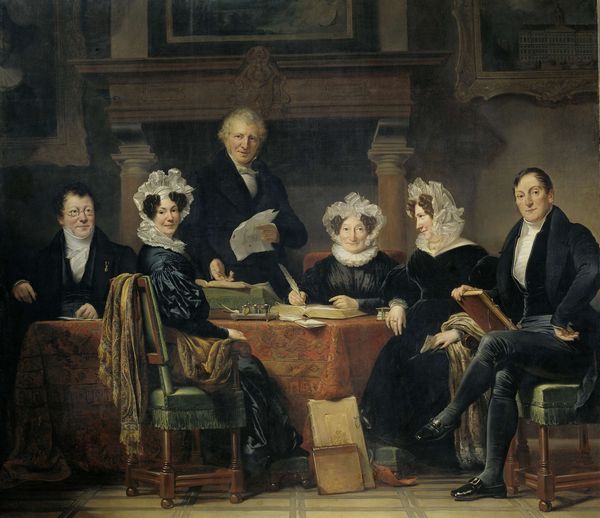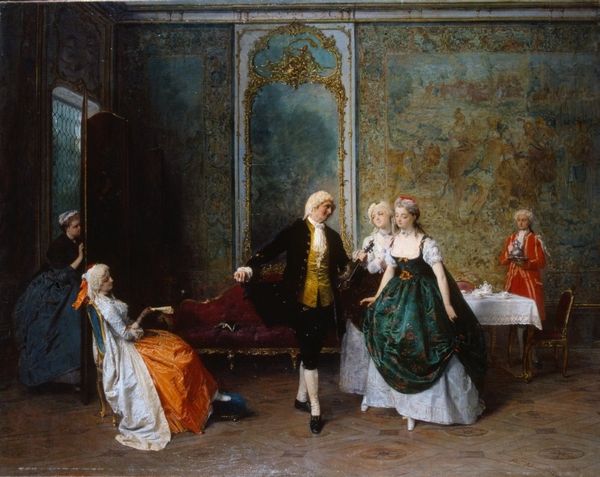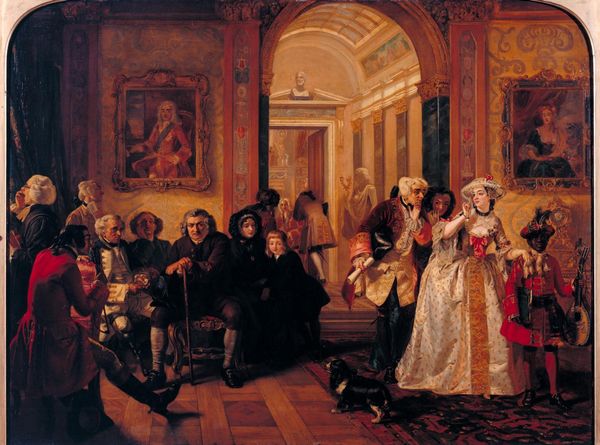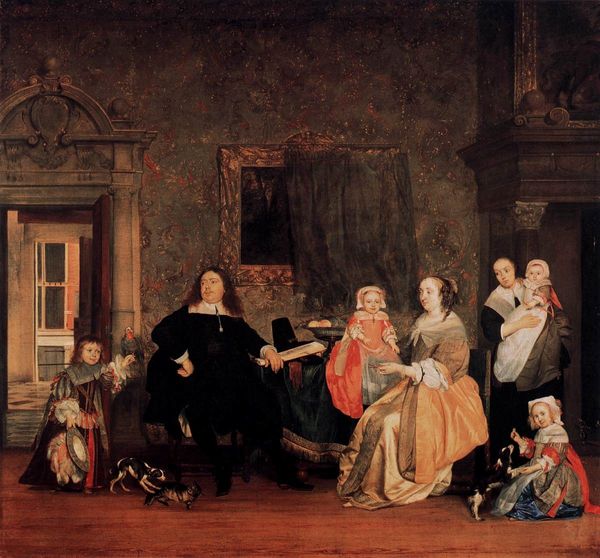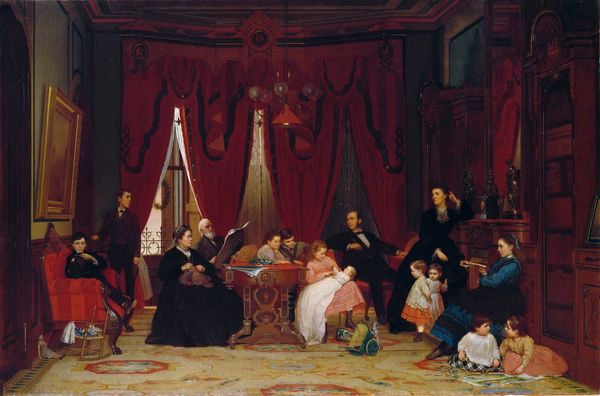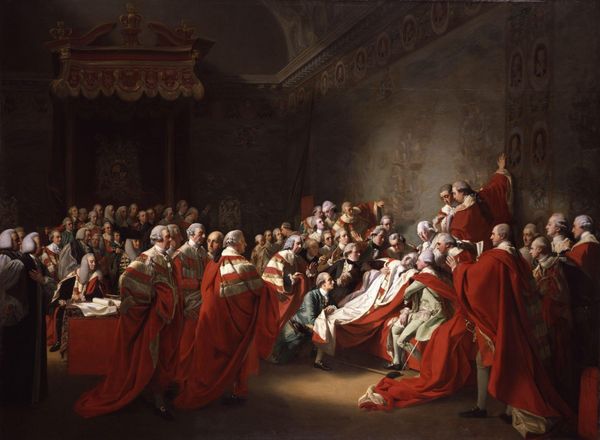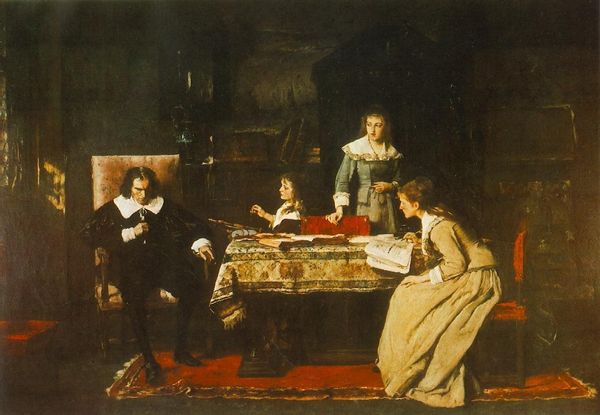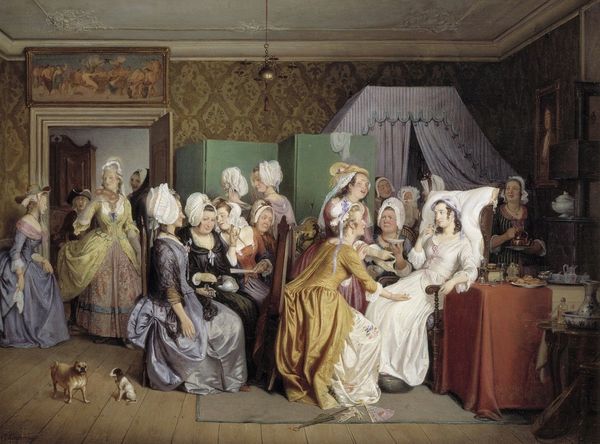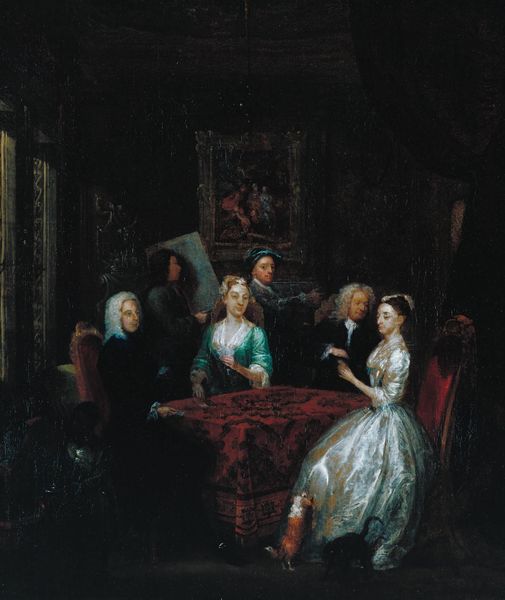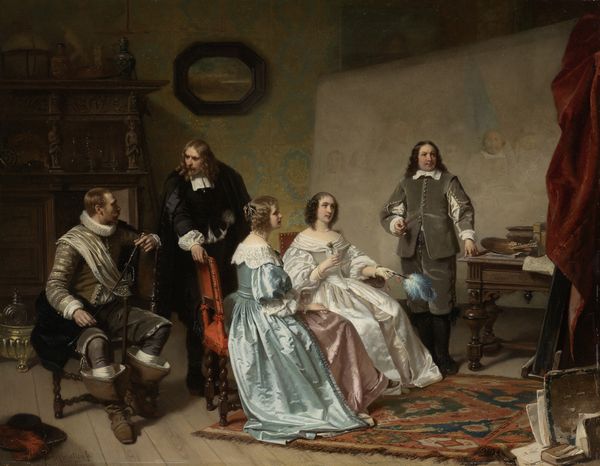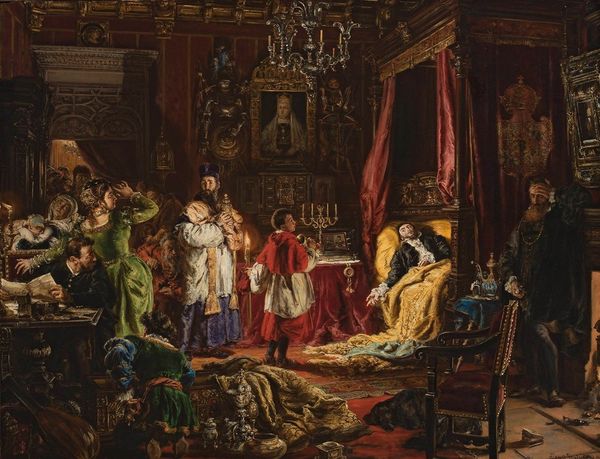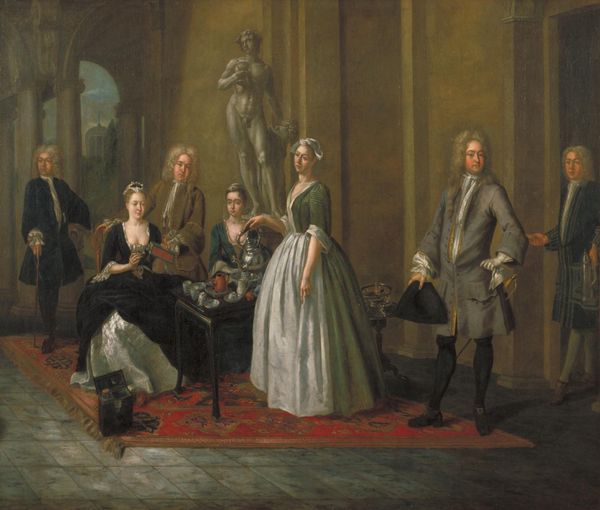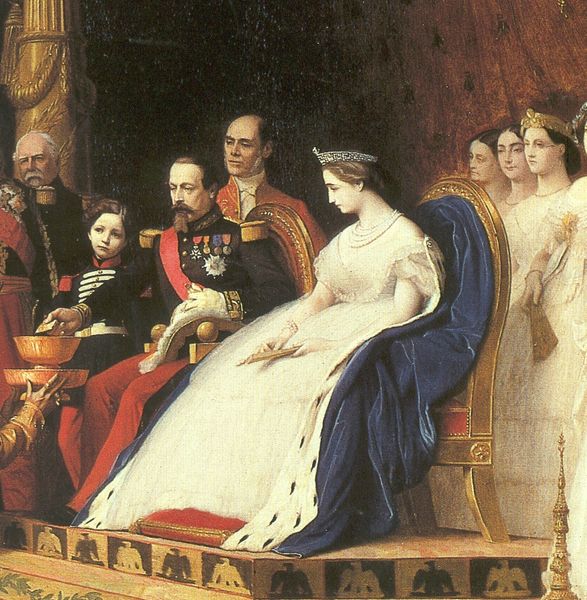
Dimensions: support: 1219 x 1524 mm
Copyright: CC-BY-NC-ND 4.0 DEED, Photo: Tate
Curator: This is Charles Robert Leslie’s “Sancho Panza in the Apartment of the Duchess,” part of the Tate collection. Look at this staging. Editor: It's like a theatre scene frozen in time. I feel like the play’s just getting started. Is this based on a story? Curator: Indeed. It depicts a scene from Cervantes’ Don Quixote. Sancho Panza, the squire, finds himself amidst the Duke and Duchess's elaborate jest. See the performative aspect of nobility underscored by the theatrical backdrop. Editor: The costumes feel symbolic. Look at the duchess—so radiant in her golden gown—versus the servants and spectators, cloaked in shadow. Curator: Precisely! It highlights the visual language of power. Notice the interplay of light and shadow, emphasizing the class divisions, while the black servant is a signifier of colonial reach. Editor: So much unspoken drama. I love the way art opens these little doors into history. Curator: Agreed. These kinds of images are invaluable keys that unlock an understanding of the cultural context.
Comments
tate 7 months ago
⋮
http://www.tate.org.uk/art/artworks/leslie-sancho-panza-in-the-apartment-of-the-duchess-n00402
Join the conversation
Join millions of artists and users on Artera today and experience the ultimate creative platform.
tate 7 months ago
⋮
The Romantics prized the Spanish writer, Cervantes, for his celebration of the wisdom of folly in his romance Don Quixote of La Mancha 1605-15. The Don has absurd adventures imitating the deeds of heroes he has read about. He is assisted by his squire, Sancho Panza, who also provides a wry commentary on them.Here Sancho confides his private view of his master to a Duchess: ‘I cannot beat it out of my noddle, but that he is as mad as a march hare.’ This is a second version of a subject Leslie exhibited, to great acclaim, in 1824. Gallery label, May 2007
